Word count: 1503. Estimated reading time: 8 minutes.
- Summary:
- The solar panels were installed at a forty degree angle rather than the planned forty-five degrees due to the terrain’s influence. The legs of the structure were chained horizontally to ground anchors and the top of the shipping container, with each chain capable of handling 250 kg or 150 kg respectively. The Q Cells 375w solar panels arrived, measuring 1.72m x 1.05m each and weighing 20kg.
Sunday 1 October 2023: 20:04.
- Summary:
- The solar panels were installed at a forty degree angle rather than the planned forty-five degrees due to the terrain’s influence. The legs of the structure were chained horizontally to ground anchors and the top of the shipping container, with each chain capable of handling 250 kg or 150 kg respectively. The Q Cells 375w solar panels arrived, measuring 1.72m x 1.05m each and weighing 20kg.
The Panels
Before I took the week off I had completed these nine wooden joists, one for each panel:
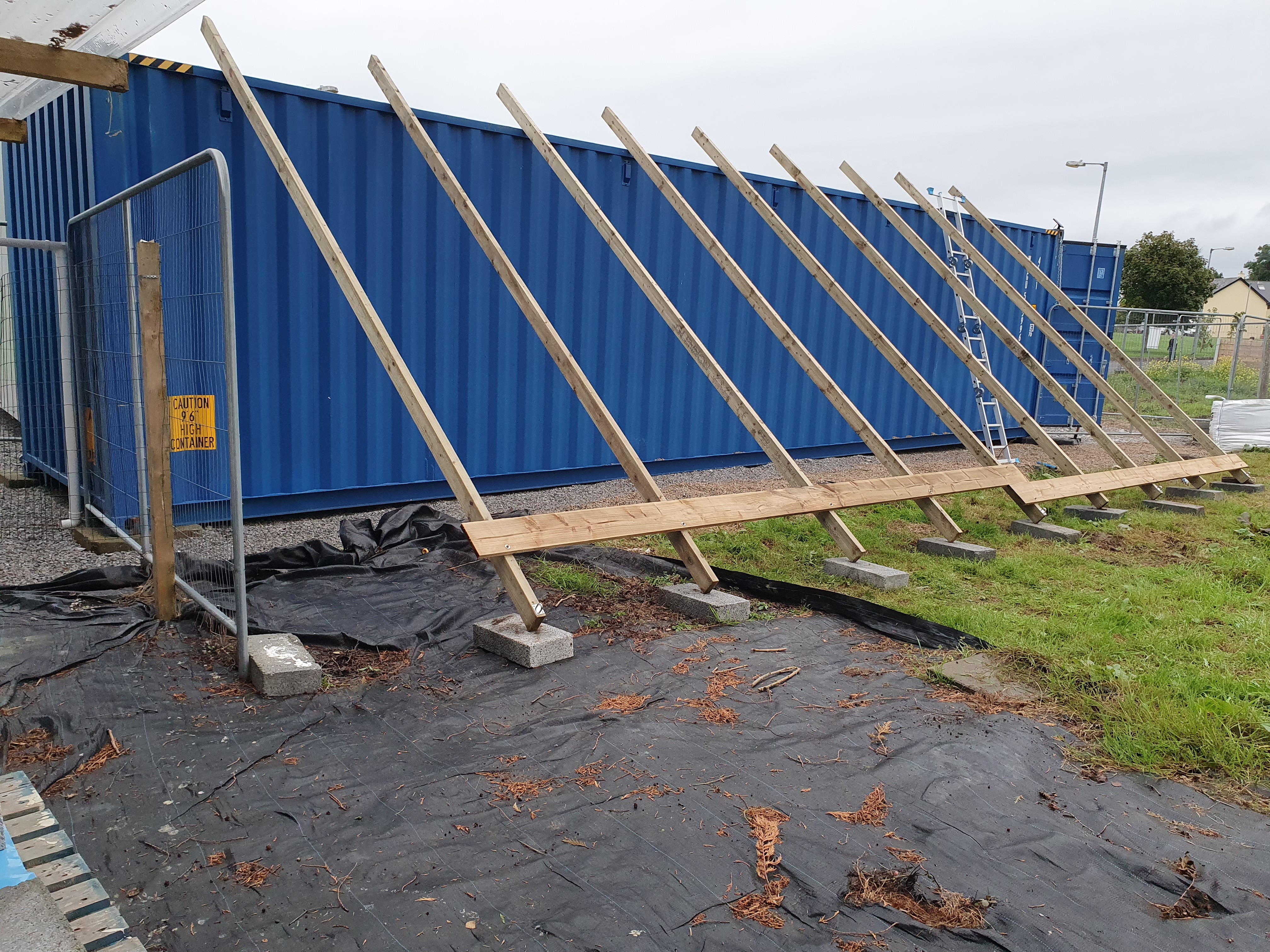
I ended up choosing a forty degree angle rather than forty-five, the way the terrain came out made it easier:
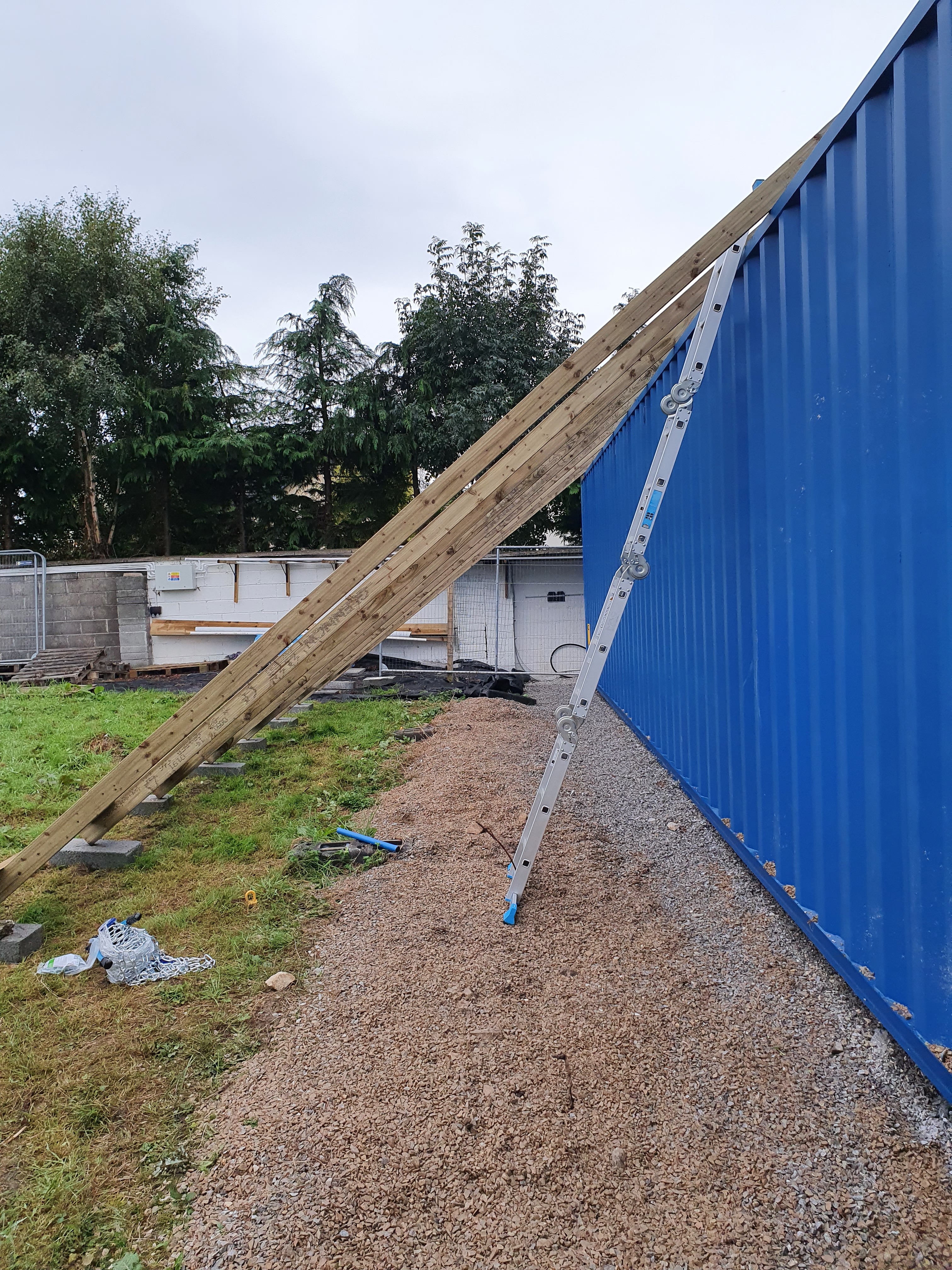
At the bottom the legs are chained horizontally to ground anchors:
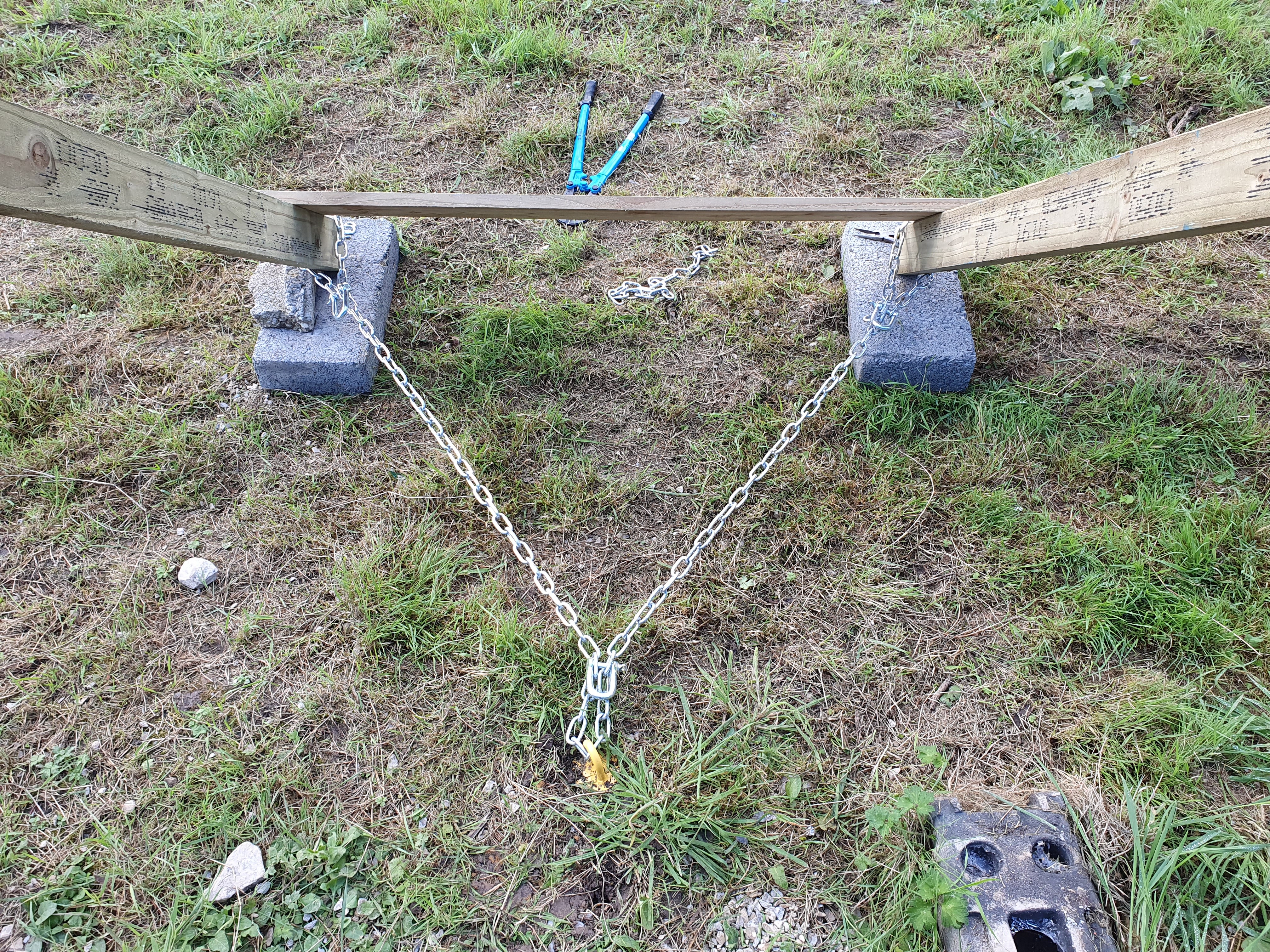
At the top the legs are chained horizontally to the top of the shipping container:
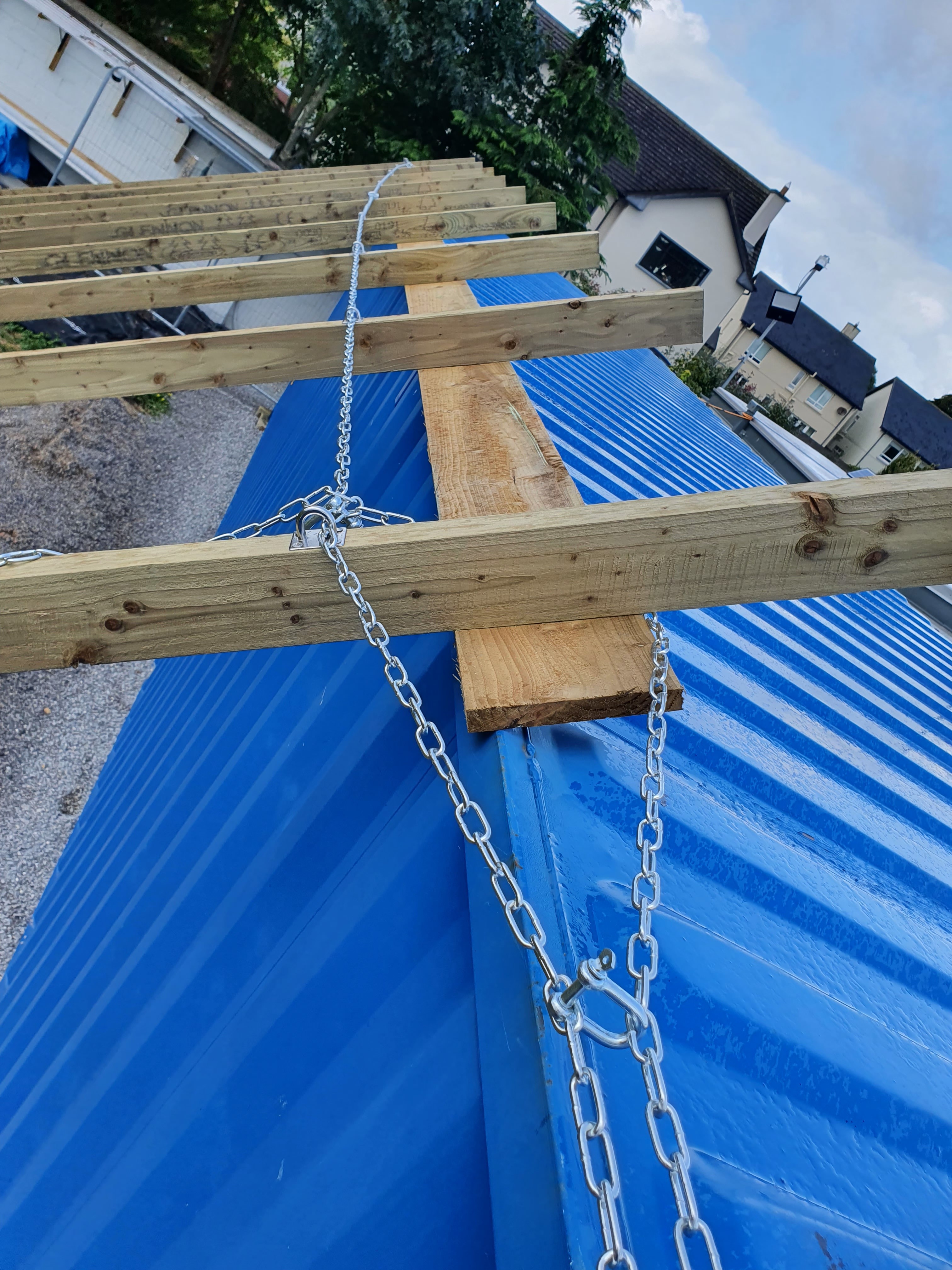
Each of the chains at the bottom can take 250 kg, each of the chains at the top 150 kg. As described last post, the wood should handle 4000 Pascals of wind force, and certainly my weight is not an issue at all.
The Q Cells 375w solar panels arrived since the last post:
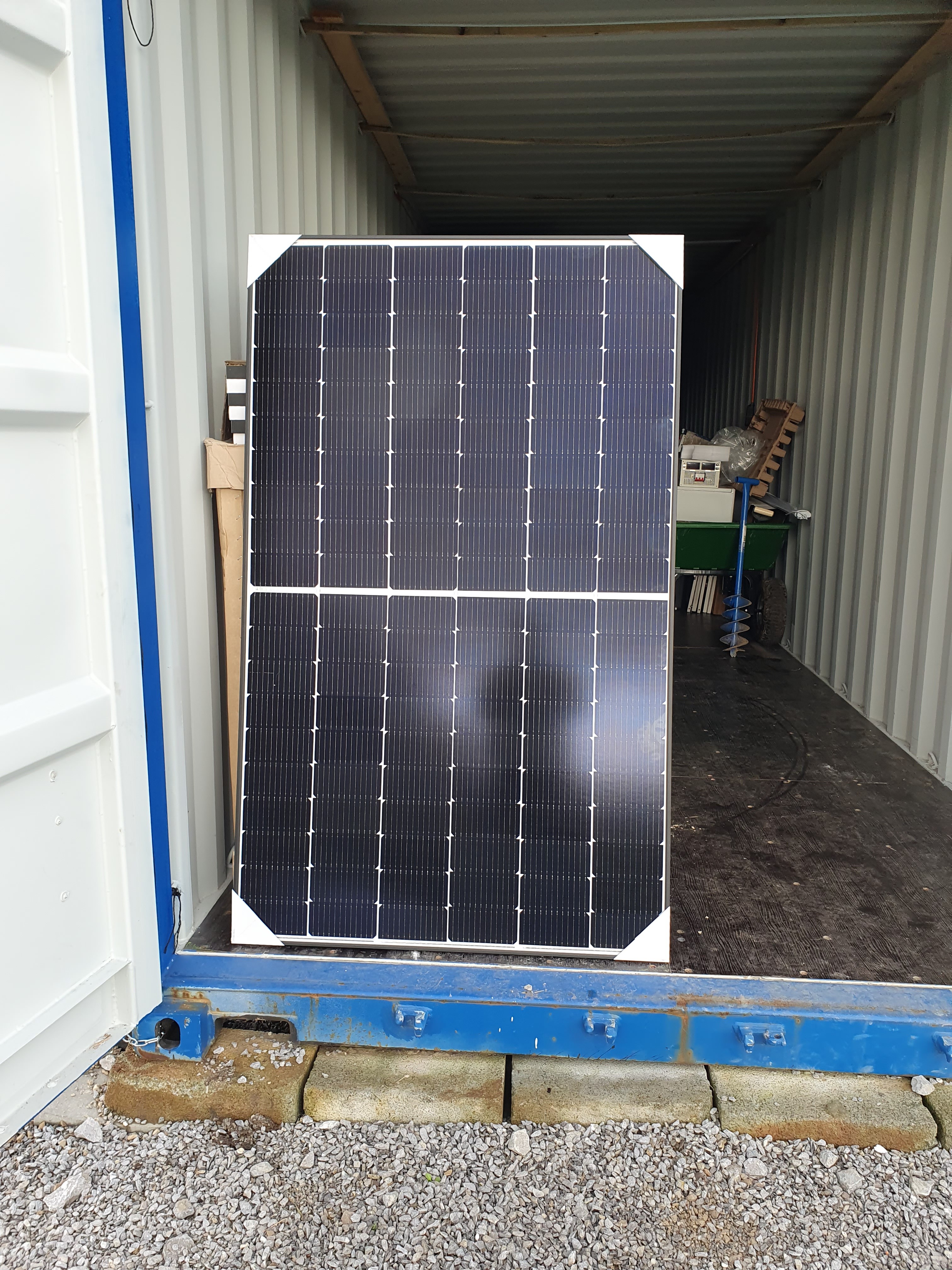
They measure 1.72m x 1.05m each, making each panel 1.8 m2. Each weighs 20kg, which I can assure you my whole upper body right now is painfully aware of as I spent today mounting the whole top row:
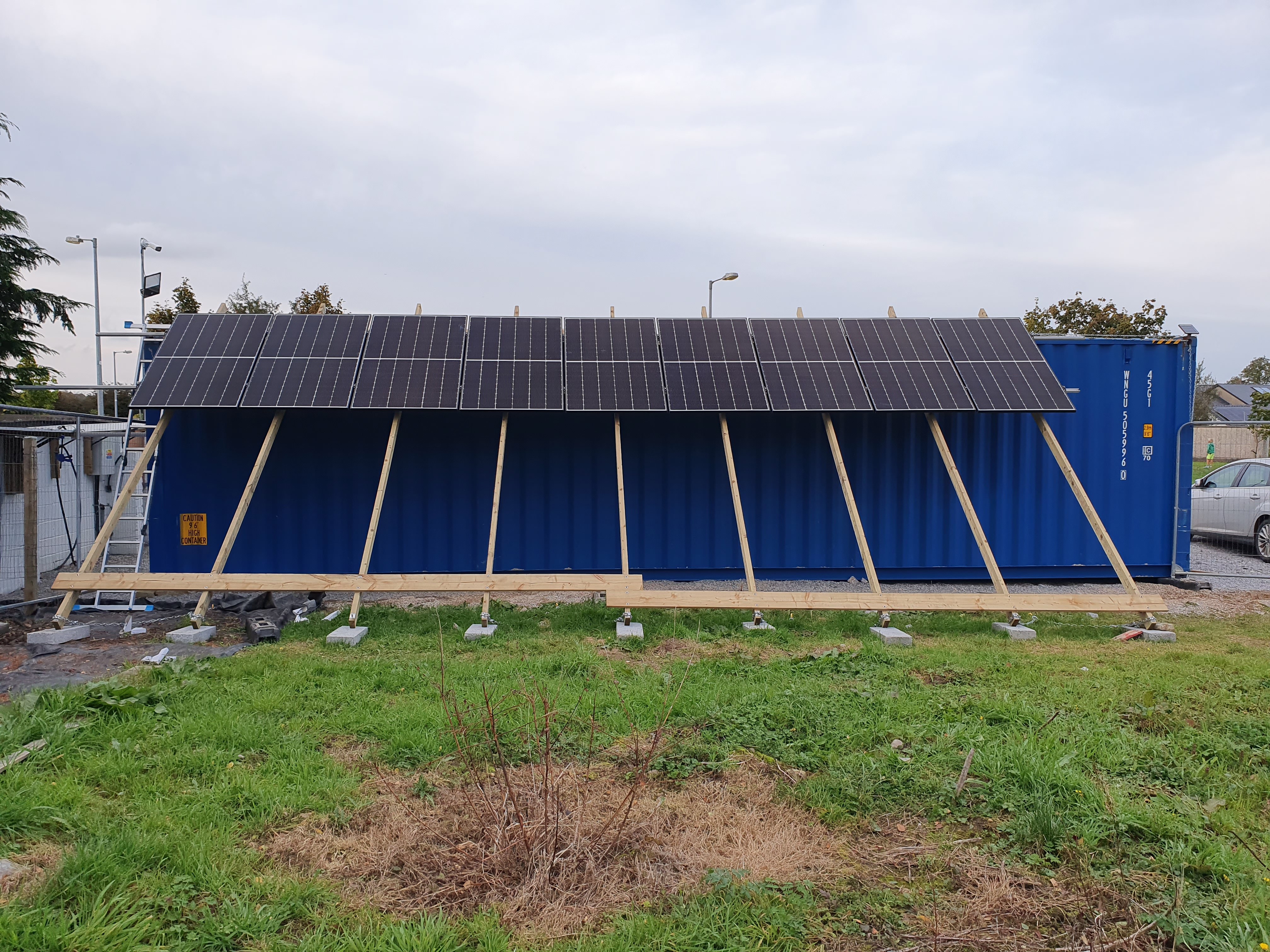
You’re not really supposed to mount these on your own, and certainly a second person would have made the job far less arduous. But I really have to hand it to the panel mountings manufacturer https://k2-systems.com/en/ they’re really, really well throught through. So much so that whilst it was tough on my muscles, never at any point was I or the panels in danger during the mounting process, despite me doing it alone.
Depending on weather, I might get the second row on next weekend. We’ll see how it goes.
The Inverter
I finally got the hybrid inverter and the batteries to talk to each other, and with that the inverter finally accepted that it is an off grid installation and it stopped tripping out over the lack of a mains input supply. I will say that the Chinese config apps are pretty poorly tested for UI usability, or indeed bugs, or indeed self consistency or logical flow. But eventually I got both batteries and inverter commissioned and for the first time ever, I had non jury rigged mains electricity on the site! Switches turned on lights, internet was working, even the hand dryer in the toilet, all working. Very nice.
I took the opportunity to charge the batteries up a bit as they’d been so long in storage they had sunk to 22% charge. So I filled the generator’s tank, and left it run until the tank ran out. I got 2.3 kWh into the batteries, and they were much happier for it (lithium batteries don’t care for being left long term at low charge). The way you use a single phase generator to charge the batteries is to pretend to be a solar panel:
A video of the generator charging the batteries
As you can see at the end of the video, that power supply unit is feeding the hybrid inverter 490v at 2.3 amps which is about 1.1 kW. If I allowed any more current (the power supply can go up to 4 amps) the generator’s overload would trip out. It supposedly trips out after a sustained 1.9 kW, if so that power supply unit isn’t very efficient, only 60%. As you can probably tell, it came from Aliexpress and it was highly inexpensive compared to almost all other 500v capable power supplies – and, in fairness, its listing did say its maximum efficiency was 75%, so I’ll forgive it. In any case, it gets the job done and given I will only ever need it in December and January, I’ll take the poor efficiency for the cheap price.
Now that the inverter finally produces power, I was finally able to test all the RCDs and other safety equipment and I’m glad to say that they all worked first time. All those many months of testing paid off.
Surge Protection
I already have surge protection on the future mains input, as I have learned to my cost what can come up an ESB mains power cable. I have low voltage surge protection on the DC mains so when someone inevitably connects AC mains to DC mains, it should protect all the DC equipment. I have high voltage surge protection on its way from China for the solar panels, so what remains is what to do about those PoE cameras up high with long runs of Cat5 ethernet between them.
Most ethernet surge protectors are really crap, and at best degrade your connection speed to 10 Mbit without providing any actual protection. Ones which doesn’t interfere with a Gigabit connection and do provide actual protection cost easily €200 each upwards. Even a well known brand name doesn’t mean the protection is any good, as you will see in this depressing video empirically testing many well known ethernet surge protectors:
Now, a 10 kA surge current is indeed a nearby lightening strike, but there are many surge currents not quite as high which can ruin ethernet connected devices, which are only designed to cope with 100 amp surges. Out of those devices reviewed above, the gas discharge based devices from Tupavco seemed a reasonable balance of cost to protection against lower surge currents which will be more common. I had to special order those from US Amazon, fairly disgustingly it arrived next day from Iowa. As a comparison, UK Amazon takes eight to nine days to deliver here. The fact that US Amazon is ‘closer’ than UK-Irish Amazon is something Amazon should be ashamed of. Anyway here it is:
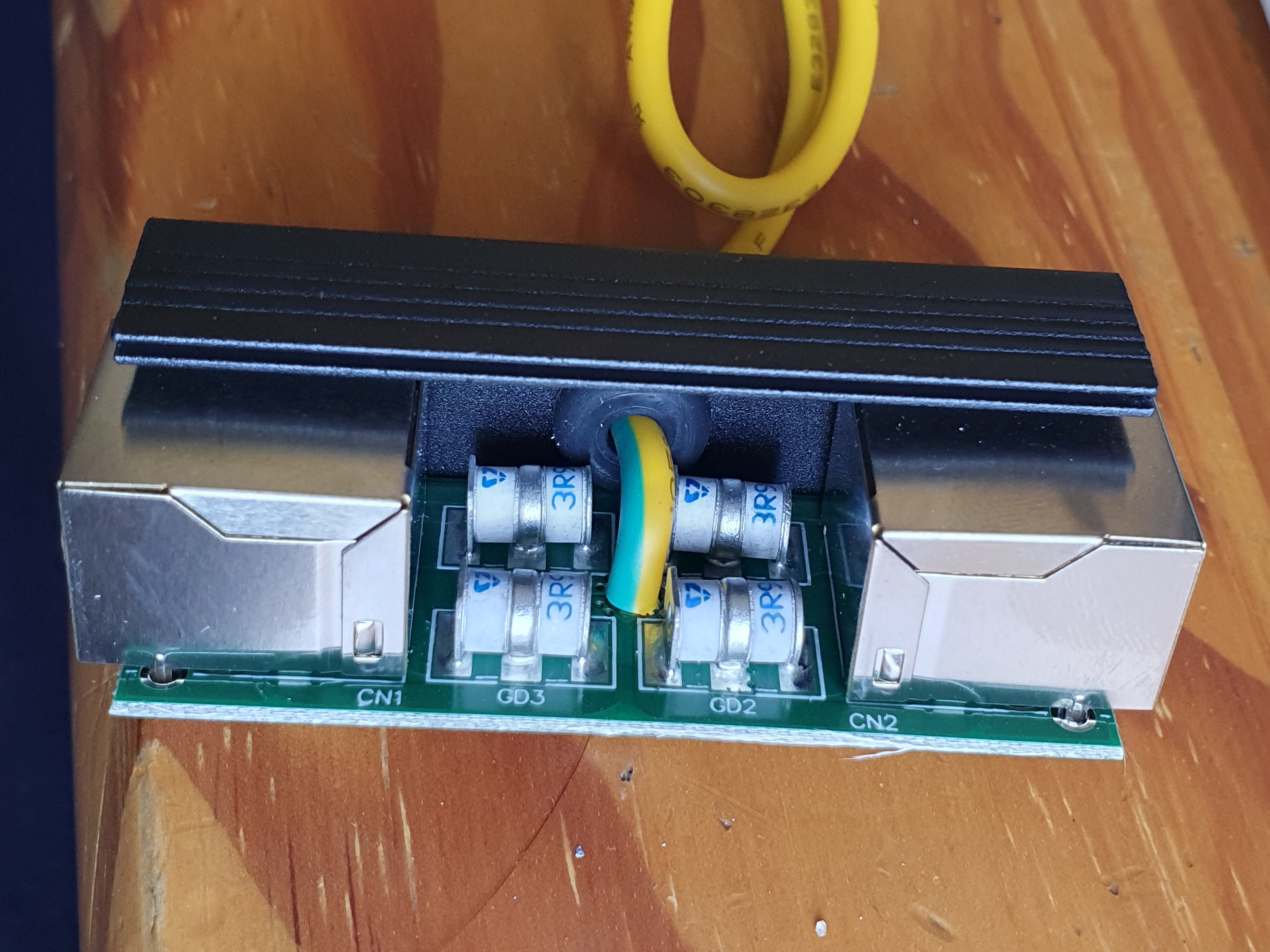
According to Tupavco, this TP302 model will divert to ground any line which exceeds 72v from ground. This allows PoE to work just fine (it’s under 60v), and because it’s a gas discharge tube it doesn’t electrically interfere with the ethernet signalling, thus not affecting connection speeds.
Reading the component’s datasheet (3R90), it claims to trip at around 90v DC, under 600v impulse, and it can cope with 10 kA surge currents at least ten times, or 10 amps of AC power at least ten times, and 15 kA at least once. Obviously as we saw from the YouTube empirical test, this is simply untrue, a single 10 kA impulse not only blew the component but in doing so also blew the protected equipment. Let’s just hope it copes much better with lower surges.
House build spend
It has been three months since the last house build spend update. This will be up to 1st October 2023:
- Spent: €221,328
- Committed to be spent soon: €12,811
- Current three month averaged spend rate: €8,523 per month
The four biggest ticket items in the past three months were: (i) Mechanical and Electrical design (ii) Forty solar panels (iii) Frame design deposit (iv) Six tonne digger rental
By far and away the largest number in there is for the M&E design. It’s going to become the most expensive design fee to date, even more than what the Architect has been paid to date. I had to put my foot down about it actually, they were on track to spend €25k or so and I was like no, I think I’ll take incomplete M&E design for a max €15k spend. We’ll make do with the incompleteness.
I no longer think I’ll be handing any money to an electrician to do the mains any more, their fees went into the early purchase of solar panels and my considerable investment of my precious free time into working around them. But I do expect structural design fees to be the most expensive item next quarter, and if not, then a deposit to the builder.
We theoretically have a build commencement slot in January, which is only three months out. Seems unlikely to me, but a March build commencement date seems achievable. Just need to get the mortgage done before then, last time it took nearly four months from application. And I still haven’t submitted the new application, because the bank are dragging their heels as usual.
| Go to previous entry | Go to next entry | Go back to the archive index | Go back to the latest entries |